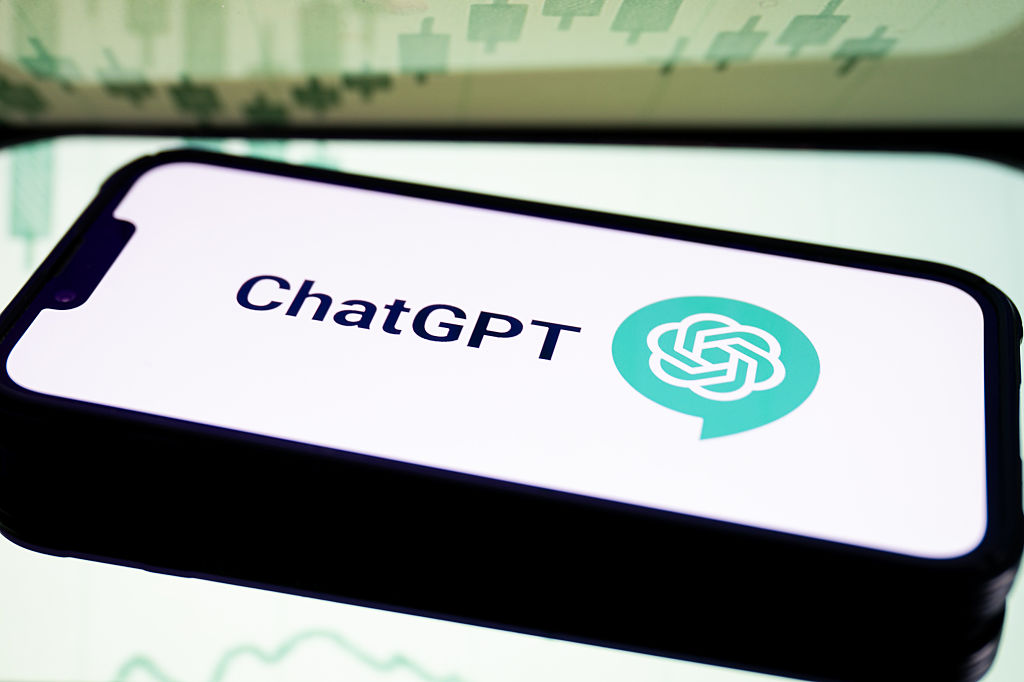Three AI stocks to watch
Despite the AI bubble increasingly coming into question, there are reasonably-priced stocks that could capture further tailwinds


Artificial intelligence (AI) stocks are still all the rage and look set to be for some time into the future, even despite growing concerns over their valuations.
The top stocks in the market are heavily saturated, and talk of the AI megacap bubble bursting is gathering momentum. The volatility in this space is captured neatly by Nvidia’s share price falling over 7% during the first week of November as concerns over AI valuations have mounted.
The week “ended very much on the back foot, as AI-focused US tech stocks lost close to $1 trillion in value,” said Tom Stevenson, investment director at Fidelity International.
MoneyWeek
Subscribe to MoneyWeek today and get your first six magazine issues absolutely FREE

Sign up to Money Morning
Don't miss the latest investment and personal finances news, market analysis, plus money-saving tips with our free twice-daily newsletter
Don't miss the latest investment and personal finances news, market analysis, plus money-saving tips with our free twice-daily newsletter
But Stevenson played down talk of the AI boom having run its course. “Talk of another bubble still looks wide of the mark,” he said. “Between 1998 and 2000 the valuation of the 50 biggest stocks in the S&P 500 doubled from 20 to 40 while those of the other 450 stocks remained below 20. This time around the gap between the two is much narrower – 29 versus 24.”
Even if it does turn out to be the ultimate bubble, there are still avenues for investors to find value in AI.
These picks of AI stocks to watch all have something that links them to the AI theme in the bull case, and could see their performance improve significantly should the AI boom continue to accelerate as its proponents expect. But equally, they have other strings to their bow (and so aren’t entirely dependent on AI), and/or are trading at valuations that make them less risky than the headline names in the event of the AI bubble bursting.
Read on to discover three interesting AI stocks to watch as we come towards the end of 2025.
Qualcomm’s inference bid
The semiconductor stock par excellence in my opinion is Taiwan Semiconductor. These days, though, it’s less of a hidden gem than it used to be, though its forward P/E multiple of 25 is still attractive given its near-monopoly on supplying AI giants trading far above there.
So while Taiwan Semi will always be worthy of a special mention, right now one of the more interesting semiconductor stocks to watch is Qualcomm (NASDAQ:QCOM). Until recently it was happy to sit on the sidelines as far as AI was concerned, and concentrate on chips for wireless connectivity and mobile devices.
But on 27 October Qualcomm announced it was throwing its hat into the AI inference ring, with two chips, the AI200 and AI250, expected to launch in 2026 and 2027 respectively.
Inference refers to the process where AI models digest prompts and generate responses, as opposed to training, which is the stage where model developers like OpenAI effectively teach them how to operate. Inference is a more data-intensive process than training and as such could be a lucrative market for chipmakers.
The market responded positively to the news – Qualcomm shares gained over 11% on the day it was announced – but they have drifted back down since.
Going up against the likes of Nvidia and AMD in inference chips will be no walk in the park for Qualcomm, but with shares trading at just 14 times forward earnings (compared to around 30 times for Nvidia and AMD), expectations are far more measured, and its strong position in wireless chips further mitigate the downside risk.
Following its latest results, Bank of America analysts raised their price objective from $200 to $215 (26% above the close price on 7 November).
Alphabet’s gathering cloud
Alongside chips, cloud services is a fundamental component of the AI infrastructure which, unlike (for now) deploying large language models (LLMs) themselves, is clearly highly profitable.
Three cloud service providers control 62% of the market (based on Q3 data from Synergy Research): Amazon (with 29%), Microsoft (20%) and Alphabet’s (NASDAQ:GOOGL) Google Cloud (13%).
Google Cloud revenue increased 34% during Q3 2025, compared to 33% for Microsoft’s Azure and 20% for Amazon Web Services (AWS).
Morgan Stanley analyst Brian Nowak thinks Google Cloud could grow at up to 50% in 2026, well ahead of current Wall Street analysts’ consensus of 31%. That could see it bear down on Microsoft and even Amazon’s market share over coming years if it can maintain that growth rate.
Alphabet is also one of the most diversified companies out there. It has its own LLM (Gemini) and has developed its own custom chips for AI – and that doesn’t even touch on its core Search business which avoided a forced break-up in an antitrust case in September.
Despite all this, the market seems to heavily discount Alphabet compared to the other Magnificent Seven stocks; a forward P/E ratio of 23 seems very reasonable.
NRG Energy for the power play
One of the headwinds that the AI boom has to contend with is how energy hungry LLMs and data centres are. In the West especially, the price and availability of energy will likely be the key bottlenecks to the advancement of AI models.
So an obvious play is for companies providing that energy. Diversified suppliers like NRG Energy (NYSE:NRG) are seeing benefits from this already: NRG’’s earnings per share (EPS) increased 32% year-on-year in its most recent quarter.
The stock has almost doubled so far this year but still trades at around 20 times forward earnings, with analysts polled by London Stock Exchange Group expecting annual EPS to increase by over 40% between 2024 and 2026.
The author holds shares in Alphabet.
Get the latest financial news, insights and expert analysis from our award-winning MoneyWeek team, to help you understand what really matters when it comes to your finances.

Dan is a financial journalist who, prior to joining MoneyWeek, spent five years writing for OPTO, an investment magazine focused on growth and technology stocks, ETFs and thematic investing.
Before becoming a writer, Dan spent six years working in talent acquisition in the tech sector, including for credit scoring start-up ClearScore where he first developed an interest in personal finance.
Dan studied Social Anthropology and Management at Sidney Sussex College and the Judge Business School, Cambridge University. Outside finance, he also enjoys travel writing, and has edited two published travel books.
-
 How gifting money this Christmas could lower your inheritance tax bill
How gifting money this Christmas could lower your inheritance tax billCash is an easy and quick present to give over Christmas – and it could protect some of your estate from the taxman down the line
-
 £100 contactless card limit to be lifted
£100 contactless card limit to be liftedConsumers will be able to set their own contactless limits from March 2026, under new rules from the Financial Conduct Authority
-
 Quality emerging market companies with consistent returns
Quality emerging market companies with consistent returnsOpinion Mark Hammonds, portfolio manager at Guinness Global Investors, selects three emerging market stocks where he'd put his money
-
 Coreweave is on borrowed time
Coreweave is on borrowed timeAI infrastructure firm Coreweave is heading for trouble and is absurdly pricey, says Matthew Partridge
-
 An AI bust could hit private credit – could it cause a financial crisis?
An AI bust could hit private credit – could it cause a financial crisis?Opinion Private credit is playing a key role in funding data centres. It may be the first to take the hit if the AI boom ends, says Cris Sholto Heaton
-
 The top stocks of 2025 - did you pick a winner?
The top stocks of 2025 - did you pick a winner?As a chaotic year in the stock market draws to a close, we review which stocks were investors’ top picks for 2025
-
 Why Trustpilot is a stock to watch for exposure to the e-commerce market
Why Trustpilot is a stock to watch for exposure to the e-commerce marketTrustpilot has built a defensible position in one of the most critical areas of the internet: the infrastructure of trust, says Jamie Ward
-
 Which sectors are best to invest in for 2026?
Which sectors are best to invest in for 2026?Investment trust portfolio managers give their views on the sectors and regions they expect to outperform in 2026.
-
 ChatGPT turns three: what’s next for the ‘AI era’?
ChatGPT turns three: what’s next for the ‘AI era’?Three years after its launch kickstarted the age of AI, ChatGPT and its maker OpenAI are driving the stock market. But concerns are growing over whether OpenAI will be able to turn its AI dominance into profit.
-
 Big Short investor Michael Burry closes hedge fund Scion Capital
Big Short investor Michael Burry closes hedge fund Scion CapitalProfile Michael Burry rightly bet against the US mortgage market before the 2008 crisis. Now he is worried about the AI boom